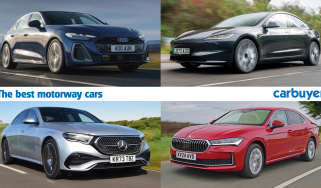Manual or automatic gearbox – which is best?
A closer look at which gearbox could be right for you, with all types explained and which is best
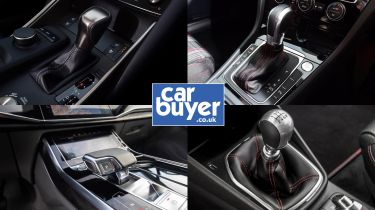
You might not always be considering gearboxes when buying a new car, but it can make a huge amount of difference to the way the car drives. Choosing the right gearbox in your next car is a very important decision - but if you're not clued-up on the differences, it can be tougher than it needs to be.
In this guide we'll help you make the right decision for your next car by explaining all the different types and what their positives and negatives are. Let's start by naming them all.
The manual gearbox - Most cars on UK roads are manuals. A manual has a clutch pedal and a gear stick in the cabin, and it usually has five or six gears.
The ‘traditional’ automatic - This is what we're going to call a normal automatic, which experts refer to as a torque converter. This is the most common type of auto as it's been around for the longest.
The dual-clutch automatic - A dual-clutch gearbox doesn't actually have a clutch pedal. It's an automatic gearbox with clever technology that changes gear for you.
CVT automatic - CVT stands for Continuously Variable Transmission. It's mainly seen on hybrids and it doesn't have gears as such, but in practice it drives like a normal auto gearbox. There's no clutch pedal.
Automatics are often more expensive than manuals if both are available on the same car, so it can be an important decision. Not all gearboxes are the same even of the same type, either - for example, Mazda's manual gearboxes are more pleasant to use than Peugeot's. You can find out what we think of each car's gearbox in their respective reviews on the rest of the website.
Some people can only drive an automatic on their licence, which restricts their choices. Plus, some cars are only available as an auto or manual. Yet for the ones where there is a choice, you'll want to know which one is right for you. Read on if you're buying a car and need to choose between manual and automatic.
Manual gearboxes
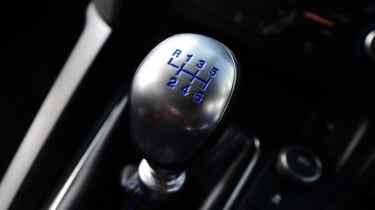
If the huge number of manual cars sold is any indication, a manual gearbox is the default choice for most drivers in the UK. Many cars at the 'affordable' end of the market have a manual gearbox as standard, while many enthusiasts prefer this type of transmission even when buying an expensive sports car.
These days, many manual gearboxes have six forward gears (sometimes referred to as 'speeds') in place of five or, just a few decades ago, four. A few manual cars even offer seven gears – the Porsche 911 and Aston Martin Vantage coupe are two examples – though both are expensive.
In most cases you'll find the gearstick is either mounted between the front seats or, in the case of some people carriers and SUVs, higher up on the centre console. In both cases, you operate the clutch with your foot. When you see a car advertised as having a manual gearbox with six gears it means six forward gears - a reverse gear isn’t counted.
The gears are selected according to an H-pattern and this is usually etched on the gearknob. On cars with a five-speed gearbox, reverse is often selected by pushing down and pulling back. With a six-speed gearbox you might have to push down the stick and move it sideways and forwards as if you were selecting a gear next to first. Some VWs are like this. Others require you to lift a collar below the gearknob as you move the lever. Your vehicle’s manual will be able to advise you.
The phrase 'semi-automatic' has come to mean different things in recent years. It has traditionally meant that you change gears with a gearlever as you would with a normal manual gearbox, but the clutch is taken care of for you, leaving only an accelerator and brake pedal for the driver. However, it has increasingly come to mean an automatic gearbox that has a mode to allow the driver to make gear changes manually, usually using paddles behind the steering wheel.
Manual: advantages and disadvantages
Advocates for manual gearboxes tend to enjoy the control they give over the car, as only you can choose which gear to use. This can provide more driver involvement, giving the feeling of a direct connection between human and machine, with a mechanical feel to each gearchange, instead of a computer taking care of it for you. In some cars, a manual gearbox can also be useful for towing and off-road driving, where you want to hold a low gear.
On the other hand, this also means a manual requires more effort than an automatic, which becomes most apparent in heavy traffic. Some learners also find the added complication of gear selection and clutch control daunting and take their driving test in an automatic vehicle - with an auto licence, they can't drive a manual legally.
Some carmakers are moving away from manuals, offering an automatic as standard on some of their models or with some of their engines; this is often for reasons of economy, as the latest dual-clutch and automatic gearboxes can help cars use less fuel and produce less CO2 than those with a manual transmission.
Automatic gearboxes
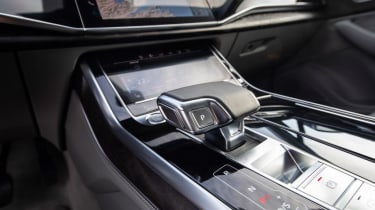
Automatic gearboxes have been around for over 70 years and although significant refinements have been made in their technology, the principle of how they work remains the same. You select from Park, Neutral, Reverse or Drive (normally abbreviated to P, N, R and D) using a gearlever, control knob or occasionally buttons. Some hybrids and electric cars have a B mode, which increases the amount of engine braking when you lift off.
In a traditional auto, on choosing a gear position complicated electronics, coupled with a hydraulic ‘torque converter’ clutch, select and engage the correct gear. Changes up or down through the gears are handled by this hydraulic clutch, which is essentially a fluid, spun at speed, that makes the connection between engine and gearbox. The use of hydraulic transmission fluid makes for very smooth changes and explains why traditional automatic gearboxes are sometimes known as ‘slushboxes’.
Many automatic gearboxes enable you to make manual gear changes, either through the gear selector lever or paddles mounted on the steering column. This is sometimes referred to as a 'semi-automatic' mode.
With technological improvements automatic gearboxes are becoming increasingly complex as well as featuring more and more gears. It wasn’t that long ago that most cars had three- or four-speed automatic gearboxes but today many manufacturers offer automatics with eight, nine, or even 10 gear ratios. This allows the engine to run at its most efficient point for more of the time with the aim of reducing economy and emissions.
Automatic: advantages and disadvantages
Many people like automatic gearboxes for the convenience they offer. You can stick the car in D and forget about touching the gearlever until you want to park or turn around: there’s no clutch to bother with, either, which reduces your exertion, particularly around town. Most drivers find that traditional automatic gearboxes offer a very smooth driving experience.
Cars fitted with automatic gearboxes can sometimes use more fuel than the same model fitted with a manual, although the reverse is also true in some cases. Vehicle emissions can also be lower with an automatic gearbox too, which can lead to a lower Benefit-in-Kind company car tax banding – worth bearing in mind for company car users. Enthusiastic drivers might find that a ‘self-shifter’ offers less control – you might occasionally find yourself in a higher gear than you’d ideally want to be when taking a corner, for example.
Although most automatic gearboxes allow you to ‘kick down’ – press the accelerator briefly and firmly to tell the gearbox to change down – and some offer the option of selecting gears with buttons or paddles, automatics are generally not considered as responsive as manuals.
Dual-clutch gearboxes
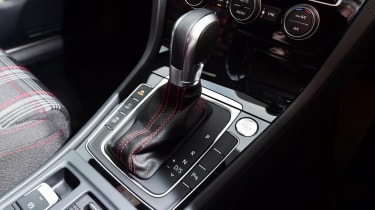
Dual clutch gearboxes can operate like a conventional automatic, shifting through the gears seamlessly with no direct driver input, but they can also be used in ‘manual’ mode. Although they have two clutches, there’s no clutch pedal, as it would be too complicated for a driver to operate both.
Manual mode is typically selected by moving the gear lever over to the left or right when the gearbox is in the D position – or by pulling on a steering-wheel paddle. When selected, manual mode allows you to select gears yourself, typically by nudging the gearlever forwards or backwards, or using paddles on the steering wheel. Returning to fully automatic mode is usually achieved by moving the lever back to the D position. Many carmakers these days offer a dual-clutch gearbox instead of a traditional automatic.
While these gearboxes are fearsomely complex pieces of technology, the theory of their operation is pretty simple. They have a similar number of gears as a manual gearbox, but two computer-controlled clutches. The gearbox predicts what gear it thinks you’ll need next, based on how you’re driving the car and uses the second clutch to have this gear ready to engage immediately. If you’re braking, for example, the gearbox will be ready with a lower gear, while if you’re accelerating, a higher gear will be ready to engage as soon as needed.
That means gearchanges can be a great deal faster with a dual-clutch, allowing almost imperceptible shifts. The development of dual-clutch gearboxes has lead to significant performance and fuel-economy benefits and they’re now fitted as standard to most high-end luxury cars and many extremely expensive supercars.
Half of the battle when specifying a new car is recognising that manufacturers may have different names for similar technology. If you order a Volkswagen, Skoda or SEAT, dual-clutch technology is called DSG, but Audi calls it S tronic. Ford and Volvo call their dual-clutch system Powershift, while if you’re lucky enough to be buying a Porsche, remember its dual-clutch gearbox is referred to as PDK.
Dual-clutch: advantages and disadvantages
Dual-clutch gearboxes seem to offer the best of all possible worlds to the modern driver: they provide the convenience and ease of a conventional automatic plus the control of a manual, should you want it. Dual-clutch gearboxes also usually manage to be more economical than either a traditional automatic or a manual, while frequently achieving improved performance as well. There are, however, things to be wary of.
The main question with dual-clutch gearboxes is one of expense: not only do they usually cost more to buy than their manual counterparts, they can be fearsomely expensive to fix if they go wrong once your car’s warranty has expired. Note that some drivers report dual-clutch gearboxes aren’t as smooth during low-speed town driving as their makers claim them to be. It’s well worth testing a new car around town to see if you find this to be true.
Continuously Variable Transmission (CVT gearbox)
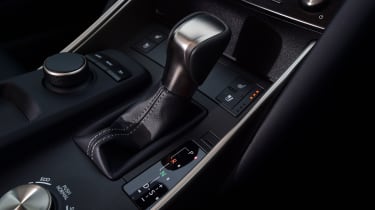
The theory behind Continuously Variable Transmission (CVT) was first thought of by Renaissance man Leonardo da Vinci in the 15th century and first patented as long ago as 1886. Just because it’s an old idea doesn’t mean it’s a bad one, however. As its name suggests, it has no gears as such, just continual movement. Progress in a CVT-equipped car can be very smooth indeed.
CVT: advantages and disadvantages
A CVT gearbox offers a very smooth driving experience, as there are no ‘gears’ to engage or disengage, just a continually moving belt. CVT gearboxes are relatively cheap to build and can offer good fuel economy. Many hybrid cars use CVT technology, as it’s easy to integrate with their complex powertrains and the combination of electric power and a CVT gearbox is usually successful.
Traditional CVT gearboxes can, however, lead to a very noisy driving experience, as the engine is sometimes held at high revs while the cones move into their optimal position – think about the noise a scooter makes as it accelerates away from traffic lights and you won’t be far off the mark. Some drivers are put off by this unfamiliar experience.
It’s also worth mentioning that as their popularity increases, so has their technology. Many modern CVT gearboxes – such as Audi’s Multitronic system – have ‘steps’. These are artificial positions along the cones that mimic the gears of a traditional automatic gearbox. These can be so successful that you may not be able to tell if the transmission is in fact a CVT.
Electric car gearboxes
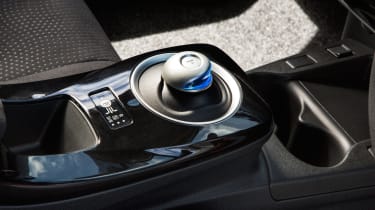
Purely electric cars tend to use motors that don’t require a gearbox. Electric motors can offer instant power, but their operation is entirely different from internal-combustion engines.
They all use a single-speed set-up that isn't really a transmission at all. In many cars the motors drive the wheels more or less directly, so the transmission is more in the software than the hardware. In practice, it's just like using a traditional auto, as there are no gear choices to be made - the car does it all for you.
Do you want to know more about VW’s DSG gearbox or if electric cars have gearboxes at all? Read our in-depth guides for everything you need to know.
Most Popular

Omoda E5 targets rivals: now with zero deposit and APR
Tips & advice

Car dashboard warning lights: what does each symbol mean?

Electric car charging stations: public networks, charger types, apps and maps





